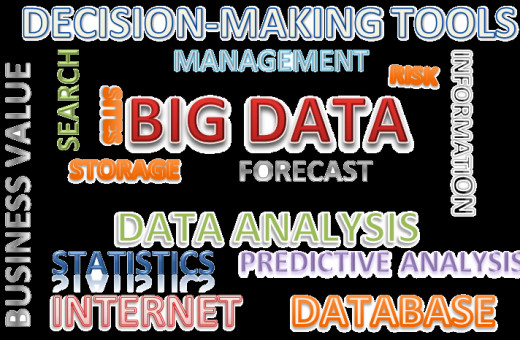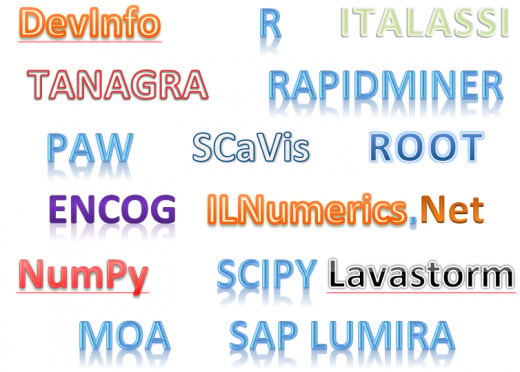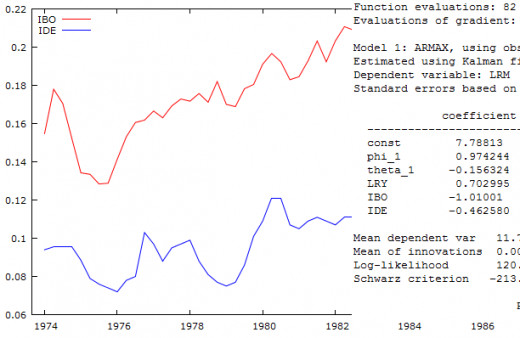Empowering Businesses with Big Data and Predictive Analysis
Introduction
In today’s business world, information means power, and the hype surrounding big data and predictive analysis has become phenomenal. The rapid development of data management systems and the widespread popularity of the Internet have allowed information to be accumulated and shared in an instance all over the world. The question posed to businesses now is how to extract the valuable information that enables them to make strategic business decisions from the abundant amount of data available. One way to do so is by using predictive analysis, a statistical technique that can help to build predictive models to forecast future trends of goods and future behaviors of customers based on analyzing the past data of relevant variables. With a bigger dataset, the statistical procedures become more complicated, but the results they produce will be much reliable. There are at least 03 ways in which predictive analysis using big data can help businesses to gain a competitive edge in their industry: predicting failure rates, planning inventories for the next period, and maintaining customers.

Predict failure rates
The most important application of predictive analysis in business is probably to predict the likelihood of failure of a product or service. This is particularly essential to companies operating in industries where failure is the biggest source of costs and loss of profits such as banking, insurance, and airlines. In fact, insurance companies employ the most sophisticated predictive models utilizing big data intensively. Before accepting a potential customer to an insurance program, the company has to consider all information about that person’s history, estimate the chance of failure, and decide whether to accept him or not, and what price he has to pay. In case a failure happens, the company will have to pay a huge amount for insurance claims. Although there is now perfect predictive model, an estimation of failure rate at least gives the company a starting point and increases its chance of making the best decision.
Plan inventories properly for the next period
For many businesses, an inability to accurately predict the amount of inventories it should prepare for the next sales period proves to be costly and hurt their profit considerably. If they stock much more goods, especially perishable goods, than they can sell, they will suffer a loss; vice versa, if they do not have enough goods to meet customers’ demands, they lose an opportunity to gain more profit, and might lose their customers to their competitors in the process. In this case, predictive model can be applied to set the right amount of stock and maximize businesses’ profit. By analyzing past occurrences and related explanatory variables, the model can forecast, with a certain level of confidence, the demand of customers for the product in a foreseeable period, and the company can prepare their supply accordingly. For example, an automotive company can build a predictive model to estimate how many cars it should manufacture for the next 5 years. This model should take into account such variables as the prices of the company’s cars, the size of the company’s target market, prices of fuels, prices of substitutes for cars, and the behaviors of its competitors.
Maintain customers and enhance their loyalty
Any smart businessman understands that customers and their loyalty are the keys to the business’ success. In the past, small companies retained their customers by observing customers’ behaviors individually, obtaining their feedbacks, attending to each customer’s concerns and offering them incentives to stick around with the company. However, nowadays, as companies try to expand their business globally and serve millions of customers, their customer base is so enormous that it is impossible for them to keep their traditional customer service practices. Fortunately, advanced statistical analysis software and tools have made it easier to keep track of these datasets, and obtain important trends and patterns of customers’ behaviors to predict the probability of a certain behavior to occur in the coming time. A company can examine their customers’ demographics, spending habits, service usage, satisfaction levels, and other factors affecting their decision to continue or stop using its products, and use the information to proactively come up with the appropriate strategies to increase the customer loyalty and retention rate for different groups of customers.
How do you make urgent business decisions?
Tips for making the most use of big data and predictive analysis
With many advantages, big data and predictive analysis are believed to bring even more benefits to businesses as new and improved analytical software and techniques emerge regularly. They can be used together with other business scheme such as suitable sales and marketing strategy, organizational culture, and adept leadership to help a company achieve greater business value. Therefore, companies make serious investments in capturing more and more data about almost every aspect of their business: clients, markets, suppliers, labor forces, competitors, finance, and so on. These data are available in various formats ranging from hard documents, spreadsheets, facts, figures, tables to more comprehensive datasets. Nonetheless, these raw data by themselves are usually of little value. They need to be selected carefully and processed properly before the decision makers can actually use them to make the best business decisions. Here are some tips for businesses to process their data before using them and make the most use of the data and predictive analysis.

Integrate data properly
First of all, the data need to be integrated and put together in a cohesive and complete set. Traditionally, companies often store their data in various locations such as personal computers, books, notes, and paper documents. This makes it hard to share data among individuals, and companies also lose important data occasionally due to personnel reallocation or office relocation. Moreover, in order to make an appropriate decision, business leaders require having data about each individual department to draw the big picture of the company as a whole. Hence, it is very important to implement a process to collect and store all the separate pieces of information in one place. As this task can be very time-consuming given the amount of data the company gathers over time, automating the process and applying an advanced automatic data management system prove to be the most efficient way to go.
Streamline data’s metrics
When building databases and setting up an integrated data management system, the company should suggest and stick to a plan to align all the data’s metrics to a uniform format to cater to a particular objective. For example, if the goal of the database is to help the leader to choose the best suppliers for the company, data about different suppliers with their price quotes, product quality, location, capabilities, discounts and so on should be collected using the same platform or data management program. The measurements for each dimension also need to be compatible, providing the leader with consistent and reliable data.
Use data analytical tools
When working with big data, human brain alone can hardly comprehend all these data in a short period of time. To thoroughly grasp the valuable information from the datasets, extract relevant trends and patterns and induce proper meaning, the data needs to be treated using the appropriate statistical models and techniques and transforming data into useful information. To this end, it is necessary to apply data analytical tools to process the data. For the time being, there are various statistical analysis and data management tools available on the market with different options, and most of them are very user-friendly with a point-and-click interface, and detailed manual guides. Also, these tools are also tailored to work with different industries or types of data. After that, the data can be presented to decision makers in a useful, accurate and meaningful reporting format, giving them crucial business insights into the problem.

Build skills to make data-driven decision
The last but not least step towards using data to make better business decision is to equip decision makers with the right skills. All the software and tools can support with gathering data, analyzing data, producing results, and making recommendations, but the business leader is the one who finally gives the order. Most experts agree that in today’s business world, relying solely on intuition and experiences will make the business lose an edge to its competitor; however, depending too much on data analysis can also result in failure because there is no perfect statistical modelling technique. Therefore, the decision maker has to be even more critical and judgmental than ever in envisioning various scenarios and weighing the pros and cons of different options. In addition to the knowledge about data analysis, business insights and hard work still play a significant role in making the right decisions.








